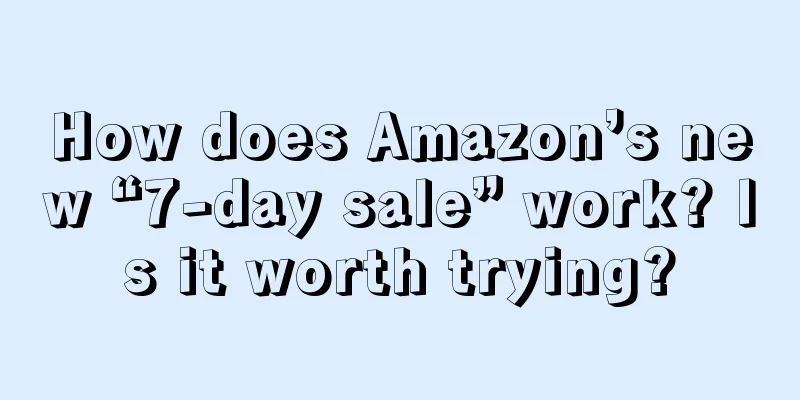Recently, on the front-end search results page of Amazon, many sellers suddenly found that some listings were marked with the "Limited time deal" logo, such as the one shown below:
Many sellers expressed their surprise that although these listings have the Deal logo, in fact the listings are not participating in the flash sale!
Indeed, such a listing is not really participating in the LD or TD flash sale. In fact, this logo actually reminds you that the listing is participating in another tool recently launched by Amazon - "7-day promotion".
In the "Secondsale" menu page of the Seller Center backend, Amazon has added a new promotion option "7-day promotion" that will be overlooked if you are not careful, as shown below:
During the setup process, if the seller checks the "7-day promotion", the system will display the listings in the store that are eligible for the "7-day promotion", as well as the highest price of the listing participating in the "7-day promotion" and the corresponding charges.
Sellers can check the listings they want to participate in the "7-day promotion" and then go to the next page. The system will prompt you to select the time period for the "7-day promotion" and you can choose according to your actual situation.
Unlike the usual flash sales charges, the "7-day sale" charges are more expensive. The charge during normal time periods is US$300, but during large-scale events such as Black Friday and Cyber Monday, the charge for the "7-day sale" is as high as US$1,000.
After the seller declares, he can check the declaration results in the background. Once the application is successful, the listing will be labeled "Limited time deal" by the system according to the scheduled time and displayed in the search results.
But at present, the "7-day sale" does not have any additional traffic entrance. If we must explain the significance of the "7-day sale", it may be just like a coupon, adding a more eye-catching label to the search results page.
Of course, as a consumer, you can use this tag to learn that your listing is on sale at a low price, so, to a certain extent, you can get a higher click-through rate.
It must be said that for this click-through rate, paying $300 or $1,000 in 7 days, plus a 15% discount on the lowest selling price in the last 30 days, is a very high cost.
So, in what situations can you try this “7-day promotion”?
My suggestion is that if your Listing has already appeared on the first, second or third page of the search results for core keywords, or you have opened in-site advertising and the advertising space is already on the first, second or third page of the search results, and at the same time, the price of your Listing has been stable at a high level, even with a 15% discount, you can still make a good profit, and your Listing conversion rate is not bad, and your daily orders are relatively large and stable, based on the above aspects, you may as well give it a try.
But from the real experience of an old seller, compared with the "7-day promotion", I prefer the "coupon + automatic advertising on the site" approach.
After all, coupons are relatively more flexible to set up, the discount percentage can be set by yourself, and it can be canceled at any time. Listings with coupons also have a label on the search results page that can increase the click-through rate. The key point is that even if consumers follow the label, not all consumers will use coupons to check out during the actual purchase and payment process. On the other hand, there is no fixed fee for setting up coupons. Consumers only need to pay a coupon usage fee of US$0.6 when using one. In comparison, using coupon promotions is lower cost and more cost-effective.

